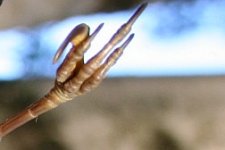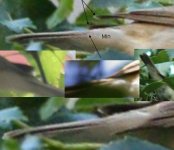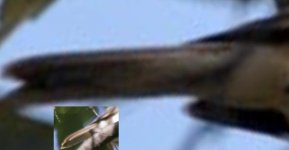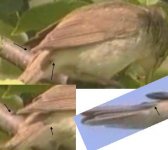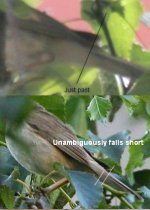Hi Dan, this is what I'm sort of exploring at the moment. Don't take this too seriously!
You are being ironic here I presume?

I realise you are collating info on variability in Reed Warblers to see if individuals can be found exhibiting the various characteristics found . . . and when done you will probably be the foremost world expert on said species!
Just tried to approach this from a different angle, (lateral thinking?) but guess the angles I came up with may have already been covered . . .
My answers (and including yours above are), roughly, are as such;
1) Common species (or rarer) within range of features normally found
Reed -
1 in 40 million??!! ie possible EOW -
0 (impossible)??!! you tell me . . . !
Sykes - ditto??!!
2)Species not yet considered -
Unlikely - given the expertise available (however were all the possible warbler sp.s from asia including india etc considered??)
3)New species/ssp -
Possible - given the retiring nature of the bird in dense foliage. How well known are the similar warber genuses known, in say, northern china. Could a bird similar to other species have slipped through the net as it were. Observers (and there are far fewer in China than the uk) would always put it down as one of the other species, even on migration if it were seen (as the c.10% unidentifiable in Africa in winter by biometrics quoted already) An 'unknown' species or subspecies could feasibly occur even closer than china of course. Whether it could get lost and turn up in Manchester in Aug is a relevant question tho. . .
4)Hybrid - I see 'don't even go there' as a previous answer to this!
Don't know if there can be proof, except a quick look on the net revealed Great Reed x Reed and Blyth's Reed x Reed, so presumably many others could occur . . . . hence a big
Possible?? (American Wood Warblers don't count, although since they are bright and bold(ish), they stand out. Old world warblers could hybridise just as frequently, just we'd never know . . . )
5) a)new mutations- if we believe in evolution then this is possible. And a whole suite of characters could change, if say a chromosome got doubled up, say.
Possible
b)throwback- since this term seems to be used mostly in a deragatory sense, or occurs when specific breeding changes have occurred as in breeding cichlid fish or in races of human after 5 or 10 generations, not sure if this can actually happen when we talk about going back thousands of generations (although there appears to be an article in National Geographic about whales growing limbs as a throwback feature!)
Unproven
6) Mass hallucination. Unlikely in this case, given the number of observers, fact that many remained impartial, and number of photographs and discussion hence.
Not possible, given the ordinary laws of the universe still holding.
7) The bird was seen reasonably well enough from all the observers and pictures taken for any key features to have been missed or misidentified.
Not likely
With regard with it being an abberant Reed W, I personally (not having seen it of course) think that several of the above scenarios are just as likely, especially 4) possibly 3 and 5a?? . . . . . But impossible to prove I suppose . . . at least you are trying to prove it could have been a Reed (but are you able to key in any of the behavioural features noted in your appraisal??)
(And I'm actually out of my depth on most of this, just my thoughts, (and my IQ seems to have just gone down a lot more just recently than I thought it was - re test the nation)

)




